Winter is a challenging time for backyard birds such as cardinals, woodpeckers, nuthatches, chickadees, titmice and wrens.
But roosting in tree cavities, bird boxes and an assortment of makeshift shelters can help these birds stay warmer at night and give them an energetic edge.
Finding a snug place to sleep on a cold winter’s night is particularly important to Carolina wrens. They belong to a primarily tropical genus of wrens and seem to have limited capacity to deal with really cold weather and snow.
Carolina and other wren species nest in natural places such as upturned roots, tree stumps, vine tangles and tree cavities, but they also nest in a whimsical array of human artifacts. Roost sites and nest sites are often one and the same.
Birds of North America cites some favored nesting spots of the wren:
- Glove compartments of abandoned cars and inside garages.
- Old shoes and shelves.
- Mailboxes and tin cans.
- And an equally whimsical array of settings are listed as the wren’s roosting places:
- Bird nesting boxes and abandoned hornet’s nests.
- An old coat pocket and a hanging fern.
- Garages and barns.
- Squirrel nests and old bird nests.
- And at least one ceramic pig planter.
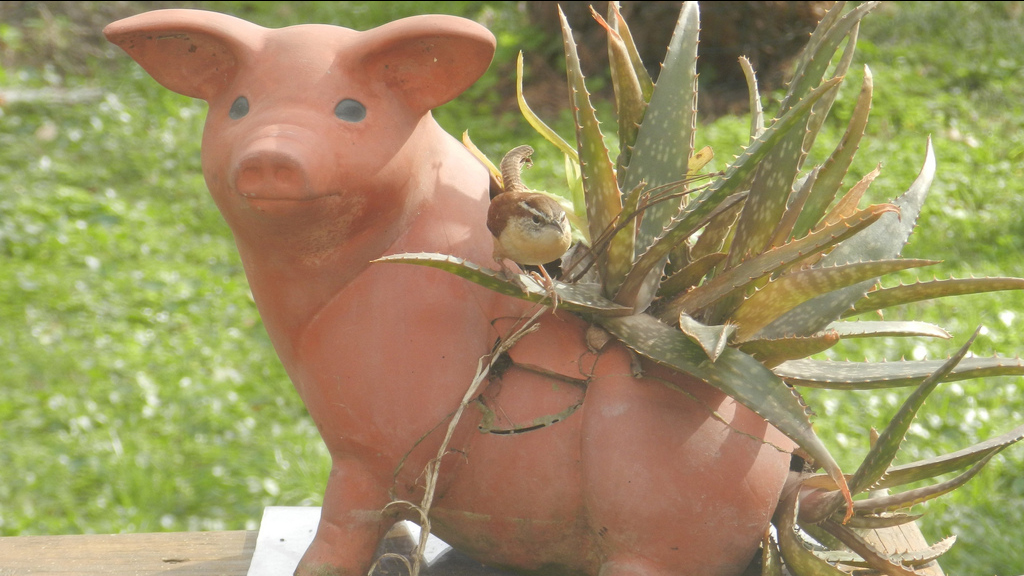
It seems that any place that can support a messy domed nest of twigs leaves, root fibers and moss is fair game for a wren.
I can add retractable awnings to the list. Every year, a pair of Carolina wrens builds its nest in an awning over my back deck – despite the mechanical activity of the awning and all the commotion below it. And in winter the pair uses the nest for roosting as well, particularly when the temperatures are below freezing.
I can be reasonably certain these are the same wrens in summer and winter because Carolina wrens don’t migrate, and pairs stay on the same territory throughout the year.
It’s been documented that the northern boundary of their range ebbs south and flows northward depending on how cold or mild the winters are over a series of years. When sustained below-zero temperatures and snow descend on the landscape, the wrens simply perish.
Near the northern edge of their range, there are clear benefits of backyard bird feeding to Carolina wrens. A study in Michigan found that bird feeding may even be supporting their northward expansion.
The research showed that in winter, wrens disappeared from areas with no bird feeders and remained common in areas that had bird feeders. It isn’t necessarily temperature that is driving wrens southward when the snow falls. It is their inability to find food during snowy conditions.
During the day, birds must eat enough to build up the fat reserves needed to keep them alive through long and cold winter nights.
Roosting in protected places gives the wrens (and other birds) a better chance of weathering the elements and conserving the hard-won energy reserves they gained during the day.
Studies of birds roosting in nests have shown that such domiciles confer critical energy savings. The same goes for roosting in tree cavities and bird boxes.
It’s not just wrens that are availing themselves of shelter when it gets cold. Woodpeckers and nuthatches nearly always use cavities to roost regardless of the weather, but chickadees and titmice resort to using cavities most often when it is very cold.
A study of the benefits of roosting in tree cavities on a cold night found that not all cavities are equal in their comfort levels. The bottom line of the research: cavities in bigger trees that are alive (not dead) hold the heat of the day longer and stay warmer at night.
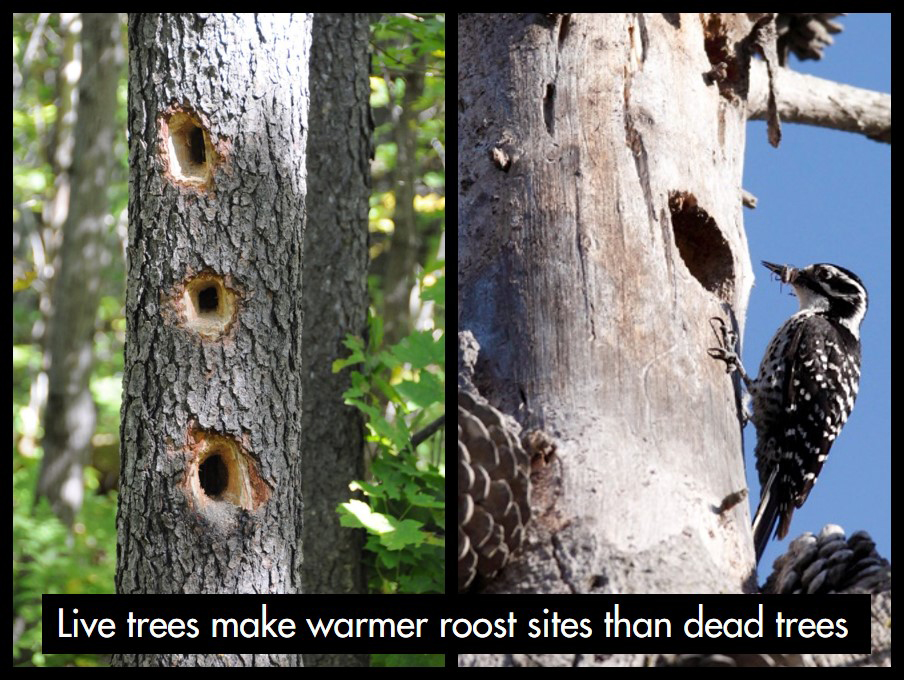
In the coldest times, some species will huddle together to stay warm. In his book Birds Asleep, Alexander Skutch shares this report on the tendency of winter wrens to huddle together on cold nights:
Nine slept in an old nest of a thrush,
Ten squeezed into a coconut shell and
Forty-six into a nesting box.
One observer noted over one hundred pygmy nuthatches entering the same dead pine trunk on a cold night. Bluebirds also roost communally in tree cavities and nesting boxes during frigid spells.
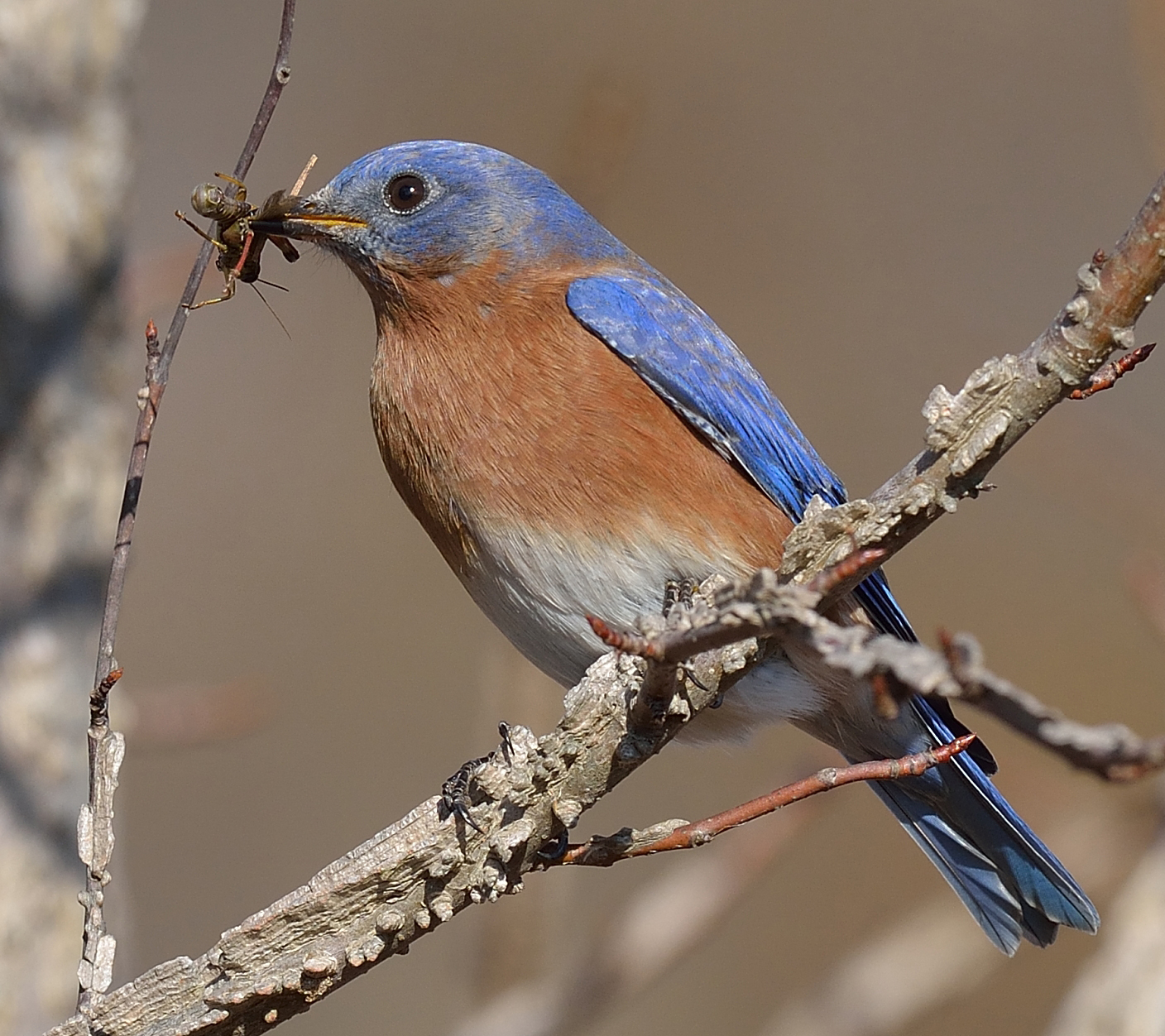
In milder weather, these same species tend to roost alone or in family groups. One individual winter wren was observed alternating between roosting alone and with other birds as the temperature oscillated from mild to frigid.
While our backyard birds might be just fine on their own, we can help birds by offering places for them to roost in winter. The easiest way to do this is to have a variety of bird boxes available during winter. If you are really creative, you can try to expand the list of wacky places where wrens will nest and roost. Poke around your yard for potential roost sites and watch and listen for birds going to roost just after sunset on winter days.
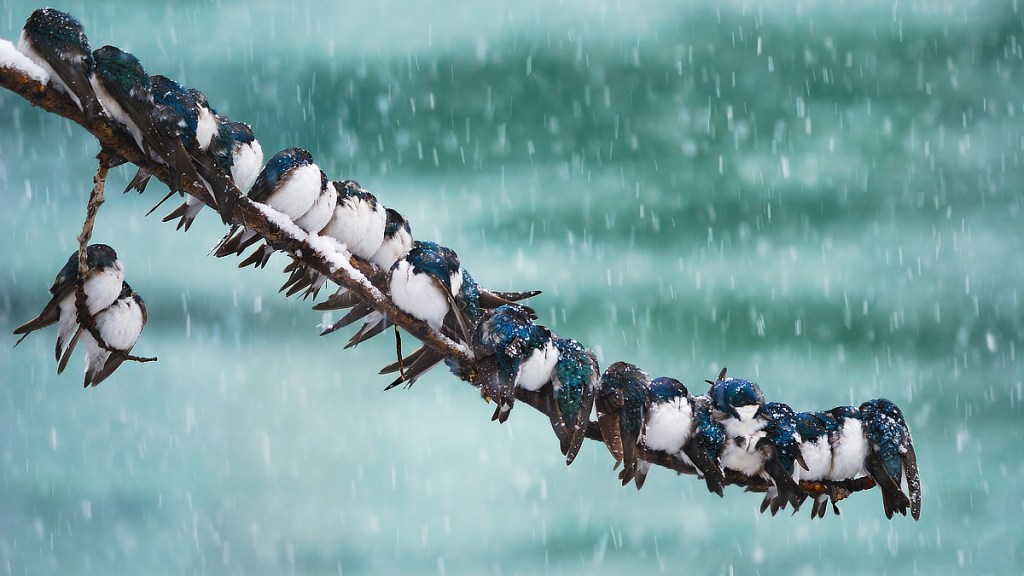
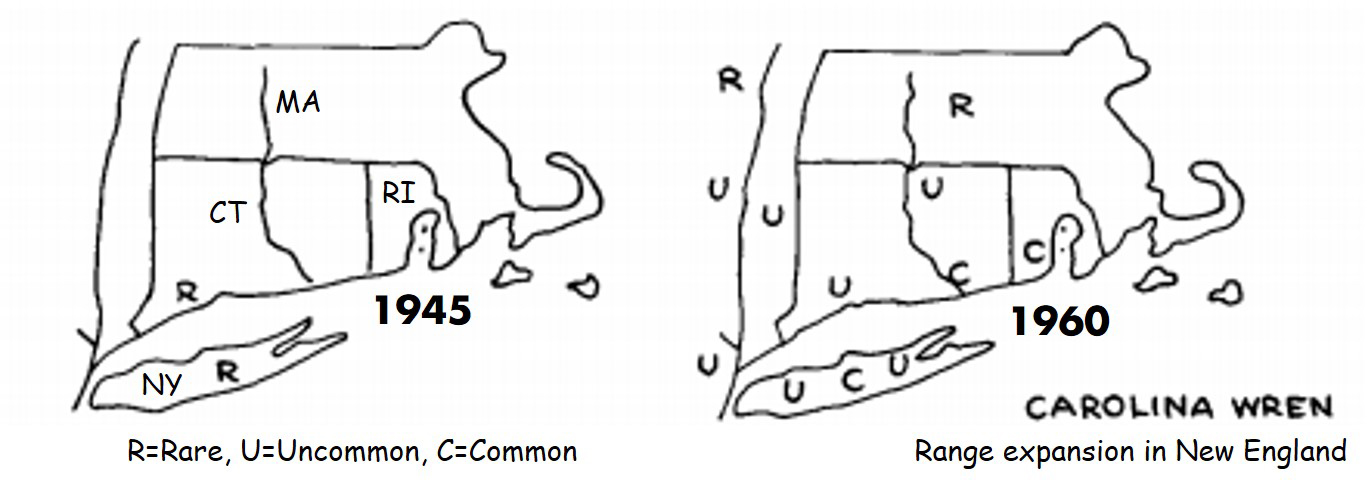
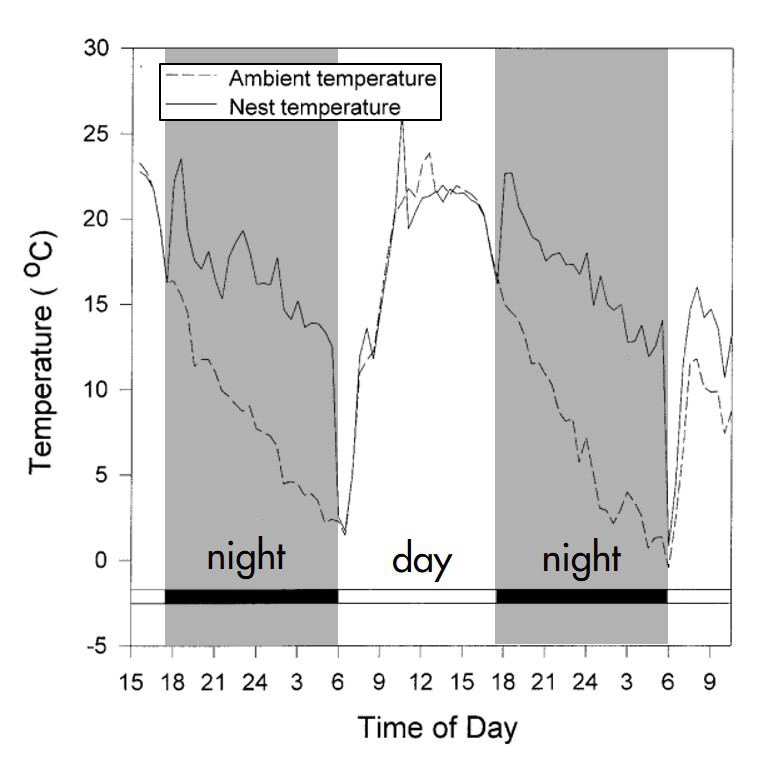



I have 3 hanging dead ferns outside my kitchen window. Will the birds use them for shelter? I feed the birds year round. I only have 1 birdhouse. I never see a bird go in there. I live Northern New Jersey.
Need to learn from birds..
Nice article . Keep it up
Worth reading.
I am especially interested in animal, birds, planets and their research, I write research on them on their website. I request you. If possible, place a location for my link on your website.
https://www.discoveryandinvention.com
I love birds. This is a very interesting article, how we can have our part in keeping them warm. Thanks for sharing.
I wanted to know what you have written in your article as how birds survive colder nights. Thank you so much
Tech Savvytech
This is so interesting and informative 😀
I am glad, I came across your article 🙂
All the very best!
–
http://www.askingminds.com
Excellent!
I live in Washington DC., and not sure what type of birds are in this area. For years I have been hearing bird chatter by my kitchen windows since the exhaust fan was broken. I hear more chatter in spring, summer and fall than winter months. I believe I became accustom to the morning chatter, since I denied to fix the kitchen exhaust fan. No alarm clock needed, the birds harmony wakes me with a sense of jovial.
Very good
I thank God for gifted individuals like you. Living in San Antonio, Texas can have its rewards, however, for many years I have worried about our little feathered friends, especially during the winter months. During these frigid times (and other seasons as well) I tend to leave birdseed and other edibles for the birds that frequent my area. A dogwood tree in my backyard provides berries for migrating birds. Several families of birds have built nests under my roof’s eaves, and during the spring when they are mating, I provide clothes dryer lint and place it in areas where they can locate it to feather their nests. I was intrigued by your article and observations of birds during the freezing climates. Thank you so much for providing the information we so desperately need and giving me a piece of mind for our friends that bring so much joy, beauty and song to our environment. I will definitely keep in touch. P.S. You look awfully young for a professor! Great work!
Lovely article. My husband and I have always wondered where the birds go to keep warm at night. Now we know!
I always wondered how birds like Chickadees could even be alive after a subzero night. So tiny and delicate looking in that ice and snow and wind. Guess they must have a secret place. Enjoyed this article.
I have always wondered if bird feeders do more harm than good. Birds naturally adapt to temp changes by migrating, stopping ovulation, etc. We likely mess up their patterns honed by millennia of evolution, why? To feed the bird feeder industry, to see pretty birds near our house, and to feel good about ourselves. But what about the bird’s best interest? Inquiring minds want to know.
Thank you for the question! Scientists have started looking into this, but results are mixed. You might be interested in this post also by Joe Smith with more information: https://blog.nature.org/2015/01/05/winter-bird-feeding-good-or-bad-for-birds/
We enjoy feeding the birds, we watch them because the feeders are outside the kitchen Windows. We even have the approximate time they will start coming to eat, both in the morning and evening, (late afternoon.) But now reading this article we will start looking for places where the birds can roost for a good nights sleep!
I want to join the Nature Conservancy to help support our environment and sanctuaries that help support wildlife and ensuring their future survival, creatures God gave us to protect and be stewards of, and the Earth He gave us to take care of, not just help bring it to ruin. Pleas send me a email how to contact Nature Conservancy by phone!! Thank you for the work you do, mm
Hi Michelle, Thank you! Check this page for volunteer opportunities with the Nature Conservancy in your area: http://www.nature.org/about-us/volunteer/search-volunteer-opportunities/index.htm This page for all Nature Conservancy career opportunities: http://www.nature.org/about-us/careers/index.htm?intc=nature.tnav.about And this page for membership: http://www.nature.org/membership-giving/membership/become-member/index.htm?intc=nature.tnav.give